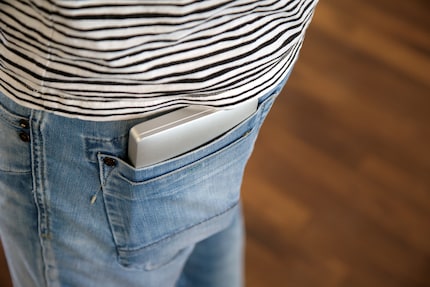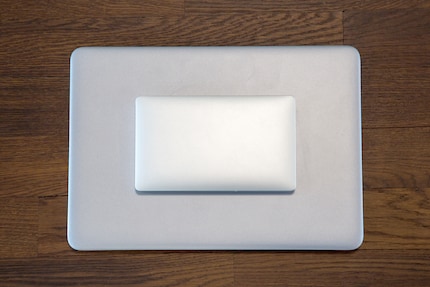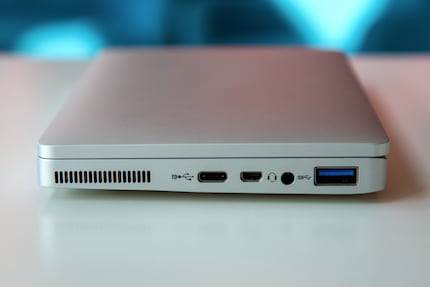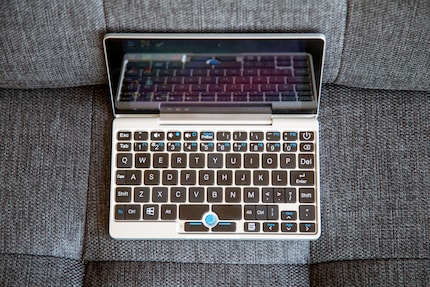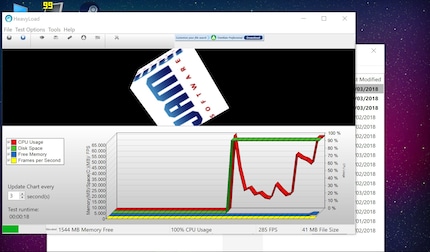
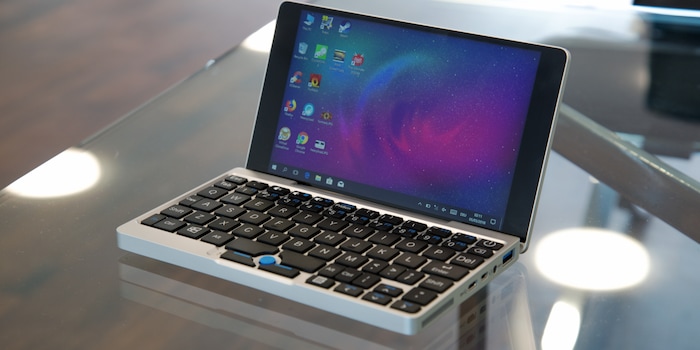
GPD Pocket: One device for everything and nothing
"What's that?" "Looks like a shrunken MacBook!" "Who needs that?" Or my favourite comment: "It's a notebook for cats!" That's how my editorial colleagues reacted to the GPD Pocket. The small computer is supposed to be ... er, yes, what is it supposed to be good for?
The GPD Pocket is an ultra-mobile PC (UMPC). They were all the rage in the mid-2000s. Smartphones and tablets have put an end to this trend. They are so powerful that we could actually do everyday office work with them. Thanks to optimised apps, they make our day-to-day work easier. So why do we still need a small mobile PC in the smart era?
Who is behind the GPD Pocket?
Exterior features
But back to the GPD Pocket. This consists of a magnesium housing. It actually looks like a MacBook that has been washed too hot, minus the apple logo. At first glance, it appears to have a high-quality finish. However, a second glance reveals that the closed display on the left and right sides of my test device is not flush with the casing. The casing does get warm under continuous load, but never hot. There are four ports on the right-hand side:
- 1 x USB A
- 1 x USB C
- 1 x headphone connection (3.5 mm)
- 1 x micro HDMI
This is more than some current MacBooks, which is amazing for the size of the Pocket. In terms of network connectivity, it has WLAN (802.11a/ac/b/g/n) and Bluetooth 4.1. The Pocket only weighs around 480 grams, which is why it cannot be opened with one hand (it tips over backwards).
GPD goes all out with the external components. With its magnesium casing, the GPD Pocket has nothing to hide from high-end notebooks.
What's underneath?
The GPD Pocket is powered by a quad-core Intel Atom x7 Z8750 with 1.6 GHz and Intel HD Graphics 405. The processor is already over two years old and performs much worse than the Qualcomm Snapdragon 835, which is installed in many newer smartphones. GPD has cut corners here, which is noticeable if you need the Pocket for more than word processing or surfing the internet. The CPU and GPU are actively cooled. The fan is audible even under low load in an office environment.
Outside hui, inside pfui?
Is the GPD Pocket really as weak in terms of performance as it appears on paper? To investigate this question, I subjected the Pocket to a stress test and tried gaming.
Hardness test
The test ran smoothly at the beginning. I was even able to surf the internet at the same time. After just over three hours, however, the Pocket had had enough: it stalled and I had to restart it. Although it didn't last a whole night, I'm still surprised at how well it survived the stress test. And at least the UMPC stalled before clouds of smoke formed.
Can you also game with the Pocket?
Conclusion
The GPD Pocket does what you would expect from a UMPC with an Intel Atom processor and eMMC memory: not too much. However, the performance is sufficient for standard office tasks. The device actually fits in your trouser pocket and is well made, apart from the not quite flush display.
The GPD Pocket is more of a niche product due to the aforementioned weaknesses and the proud price of 749 francs. However, if you have 750 Swiss francs lying around, can find a use for the Pocket and are interested in technology, you can buy it without hesitation.
From big data to big brother, Cyborgs to Sci-Fi. All aspects of technology and society fascinate me.
